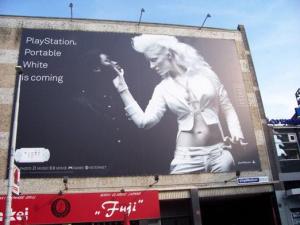Race and the evaluation of racism has been brought to a new forefront with the election of our first United States President of African American heritage. This discussion on race and racism within America has been chronicled on CNN’s Black in America series and Latino in America. The discussion on whether the treatment of races within the United States is fair and just in the distribution of resources and opportunities is not debatable because history supplies the evidence to evaluate this question. The new question for evaluation is whether as a nation we have overcome many of the racial stereotypes which have contributed to the oppression of various races within the United States. If this question is assessed through the examination of how advertisements have altered their characterization of race and ethnicities the answer would be no.
Race is a social construct created to justify the overtaking and oppression of various ethnicities throughout history, and as a country a climate of racism has plagued our generations due in part by the perpetuation of stereotypes through the media. Radio, Literature, and television can all be referenced as outlets to at one time confirm the not true stereotypes associated with different races. For example, the early stereotypes of Afric an American dealt primarily with the notion of African Americans being savage people whom are not clean, smart, or trustworthy based solely on the color of their skin. This ad produced for Fairy Soap illustrates racism through advertisements. The caption at the bottom of the ad says “Why doesn’t your mamma wash you with Fairy Soap”. The African American child is dirty and poor through the depiction, and apparently if she uses Fair Soap like the White child she will no longer be of a lower social status. The picture also breaks down one of the oldest and most detrimental philosophies within America, that White is right.
an American dealt primarily with the notion of African Americans being savage people whom are not clean, smart, or trustworthy based solely on the color of their skin. This ad produced for Fairy Soap illustrates racism through advertisements. The caption at the bottom of the ad says “Why doesn’t your mamma wash you with Fairy Soap”. The African American child is dirty and poor through the depiction, and apparently if she uses Fair Soap like the White child she will no longer be of a lower social status. The picture also breaks down one of the oldest and most detrimental philosophies within America, that White is right.
Currently in the 21st century we have come very far as a nation to avoid racism such as this in advertisements. Unfortunately this statement is easily debated through the referencing just a few current advertisements for both Sony and Intel. Though many can conclude these ads are not meant to be racist but by accident can be misconstrued only allows me to make the claim that possibly, as a people, racism is innately programmed as to come to light even when it is not our intention. Looking at the Sony billboard we view a savagely depicted African American woman being chastised by a white woman.The caption reads, “White is coming”. Does this mean black will be taken over, oppressed, and pushed aside? Possibly. Though the race may not be “racist”, the ad is culturally insensitive to the history of our country. Very similar is this Intel advertisement.

We have a white man standing offer hunched down black men. The caption reads, “Multiply computing performance and maximize the power of your employees”. The word employee seems in this case to be comparable to the word slave, just a thought.
History has a way of creating a memory archive which subconsciously develops the way we think and perceive the world around us. Possibly the memory archive of members of oppressed races makes them ultra sensitive to current advertisement which is not actually racist in connotation, or maybe the ads are just racist.
April 22, 2010 at 10:53 am
Hi –
I work @ Intel and saw your mention of one of our ads from a few years ago. I thought you might be interested in the apology that was issued right after this was brought to our attention. The ad was pulled immediately. You can see the apology here: http://blogs.intel.com/views/2007/07/sprinter_ad.php
April 23, 2010 at 7:37 am
Thanks, Rick, for reading — and for adding to our discussion.